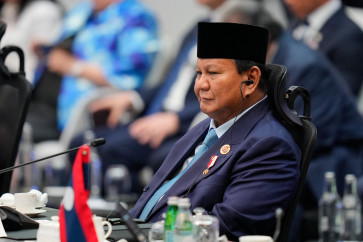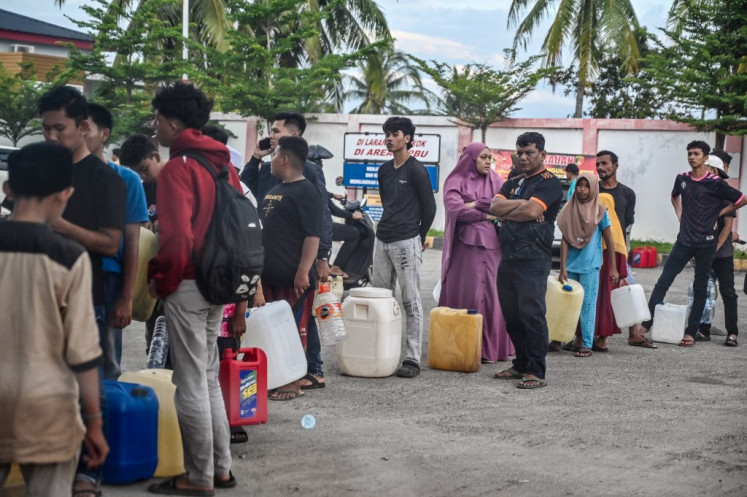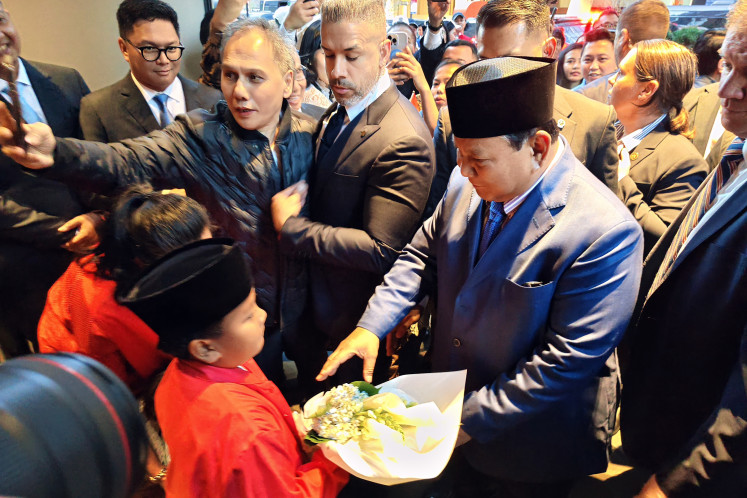Popular Reads
Top Results
Can't find what you're looking for?
View all search resultsPopular Reads
Top Results
Can't find what you're looking for?
View all search resultsKadin sets up team to focus on eastern regions
To help speed up the development of regions in eastern parts of the country, the Indonesian Chamber of Commerce and Industry (Kadin) on Thursday announced the establishment of a working group to deal with the matter
Change text size
Gift Premium Articles
to Anyone
T
o help speed up the development of regions in eastern parts of the country, the Indonesian Chamber of Commerce and Industry (Kadin) on Thursday announced the establishment of a working group to deal with the matter.
For that purpose, Kadin also recruited several figures who used to work with the now-defunct Special Unit for the Acceleration of Development in Papua and West Papua (UP4B) which analysts said was not successful.
Ferrianto Djais, the unit's former deputy for economic and infrastructure development, said infrastructure development in the regions should go hand in hand with the development of local economies.
He said previous attempts to boost development in eastern provinces lacked economic support, which resulted in the available infrastructure not being utilized to its full potential.
'Unlike in Java or Sumatra, infrastructure development alone [in eastern provinces] doesn't trigger growth. We have to integrate it with economic development,' Ferrianto said on Thursday on the sidelines of a Kadin meeting in South Jakarta.
Taking Sorong, West Papua, as an example, Ferrianto said transportation costs in the regency remained high although infrastructure was available.
'Businesses ship products there via container, but because there is nothing to ship back, it becomes costly,' he said, adding that the cost of fuel in Papua could reach Rp 50,000 to 150,000 per liter, depending on supplies.
Ferrianto, who will be appointed as the deputy for infrastructure in Kadin's new working group, urged the government to develop specific commodities in each region, such as agriculture in Papua, to help ease high costs and provide areas with reliable income.
Furthermore, he suggested that the state subsidize transportation costs for as long as necessary to help Papua's products stay competitive. 'If connectivity isn't supported by economic activity, then Sorong's ordeal will also happen all over the region,' Ferrianto said.
Moreover, he urged the government to encourage cooperation among regional administrations, the private sector and local communities in developing the regional corridors.
Nasruddin Tueka, chairman of Kadin's permanent committee for economic coordination in Eastern Indonesia, meanwhile said the working group's aim was to support the development of eastern Indonesia by growing the local economy.
One of its immediate plans involves coordinating with the Trade Ministry's directorate general for small and medium enterprises to develop cassava plantations in eastern provinces, with plans to reserve 500 hectares per village for plantations in cooperation with the Villages, Disadvantaged Regions and Transmigration Ministry.
Nasruddin said the effort would need Rp 11 trillion of investment for 2015 alone. It would help the eastern regions to cultivate commodities that could be exported to Canada, China, South Korea, Japan, New Zealand and Australia. He said cassava was mainly exported as chips, tapioca flour and gluten.
Nasruddin also said that the group would work in the eastern regions on expanding the maritime industry, especially the fisheries sector, as well as renewable energy resources such as solar cells, geothermal energy and wind power.
'If we improve on the micro-structures first, then the macro-structural goals can be achieved,' he said on Thursday.
According to data from the Central Statistics Agency (BPS), Indonesia's eastern provinces have historically contributed less than 5 percent of gross domestic product (GDP) in the last 20 years, with the Maluku and Papua corridor contributing 2.18 percent, the Sulawesi corridor 4.82 percent, and the Bali and Nusa Tenggara corridor representing 2.53 percent of GDP in 2013.










